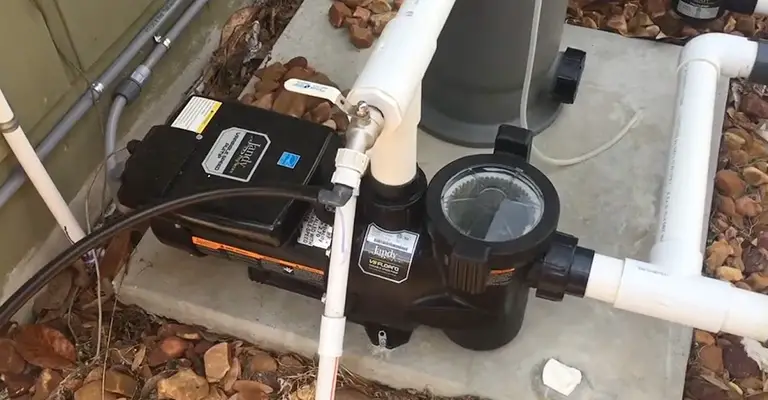Having a functional pool pump is crucial for maintaining the cleanliness and proper circulation of water in your swimming pool.
However, encountering the issue of “no flow” can be frustrating and disruptive to your pool maintenance routine.
When you notice that your pool pump is not producing any water flow, it is essential to address the problem promptly to prevent potential damage to the pump and ensure the continued enjoyment of your pool.
In this guide, we will explore common causes of no flow in pool pumps and provide step-by-step instructions on how to fix the issue effectively.
By following these troubleshooting steps, you can restore the flow of water and keep your pool in excellent working condition.
Fixing No Flow On Pool Pump
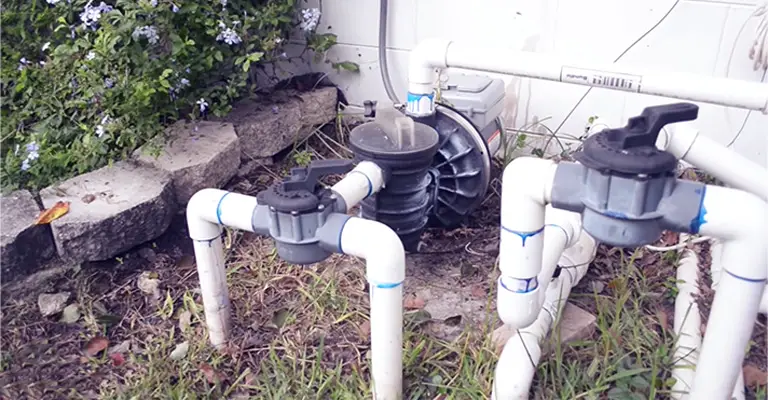
You don’t need to despair if your water isn’t flowing! It’s a common problem and can sometimes be easily fixed. You can do some quick checks to discover where the problem lies, and some simple fixes.
If not resolved quickly, no water flow can damage pumps, break impellers, and leak mechanical seals, resulting in expensive repairs.
Blocked Baskets
There is a high probability that the baskets are full of debris if there is no flow or low flow.
Skimmer baskets (by the pool) and pump baskets (inside the pump) should be checked and emptied regularly to ensure proper water flow and allow the pump and system to function effectively.
Make sure the pump is turned off before you remove the baskets and close the valves in front of the pump if the pump is below water level. Make sure the multiport valve is set to closed on the filter.
Check Pump Impeller
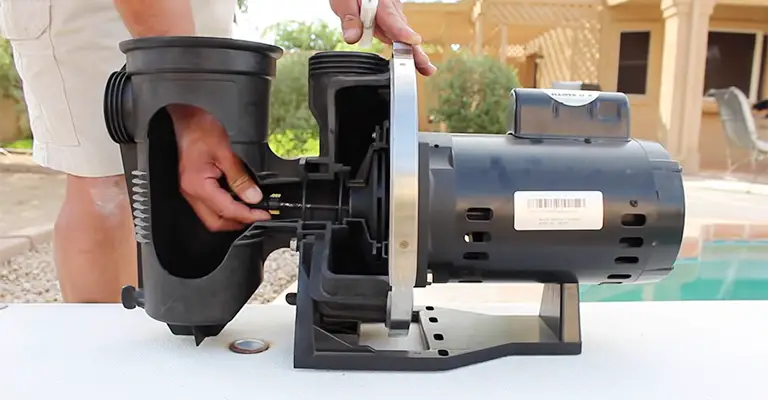
Impellers work by spinning a hollow disc at high pressure and sucking in water from the center. The impeller of your pump will not be able to move as much water if it is clogged. Breaks or splits in the pump basket usually cause this blockage.
You need to remove the pump basket and lid of the pump to fix the problem. You can then try to remove debris from the impeller using a small tool or your fingers.
Do You Have A Variable-Speed Pump?
A variable speed pump runs at a lower speed to save power and therefore costs, but at the cost of less flow.
In most cases, variable speed pumps will start at a high speed to prime the system, and then will drop to a lower speed after a short while to conserve energy.
Once your system switches to its lower speed setting, you may need to make sure it remains primed.
Observe the flow of water through the salt chlorinator cell housing or feel the pressure of the flow out the return lines after turning on the pump.
You should leave it running and come back once or twice with 30 minutes in between in case the speed setting is responsible for the flow.
It may be necessary to work through some of the other suggestions below if the pump doesn’t prime or if everything seems fine after it has run for an hour or longer on the lower setting.
The top of the motor at the rear of the pump will most likely have a few buttons that will allow you to adjust the speed if you are not sure if the pump has variable speed.
Clean Your Filter
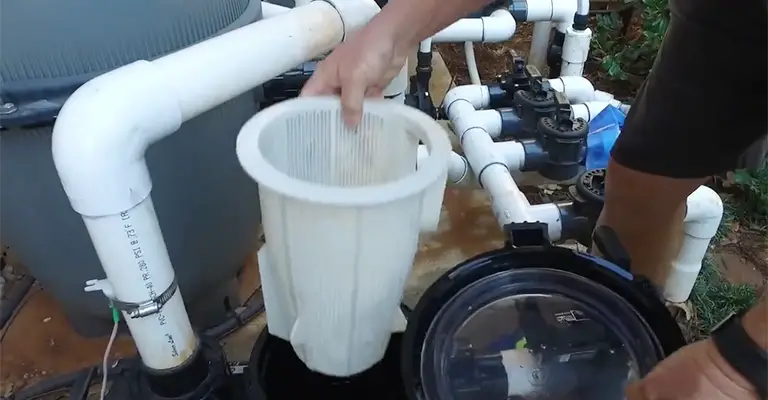
In the event that a filter is clogged with dirt and debris, water will flow slower due to the pump’s limited ability to push water through the filter. To make sure the water has an easier journey through your media filter, try backwashing and rinsing it.
Try turning off the pump and setting the filter to recirculate if this does not work. You may need to change the media if you are still not able to backwash after you have restored normal flow.
You must remove the cartridge filter from the housing and close any valves beneath the water level if you have a cartridge filter.
Make sure the cartridge is clean or replaced, if necessary, reassembled, lubricated, and valves opened. Once the pump is on, bleed the air from the top until the water starts flowing again.
Regularly backwash D.E filters, then clean them by disassembling, hosing & reassembling them every few months.
Close any valves and turn off the pump before starting. Finish by cleaning, reassembling, opening the valves, and bleeding the air!
Check If Your Pump Is Primed (Full Of Water)
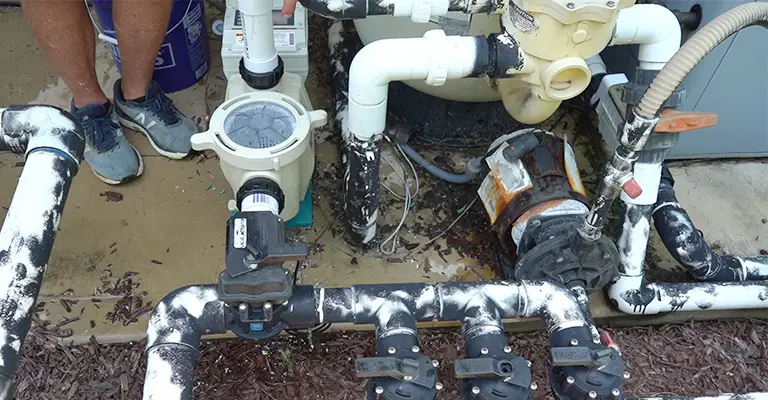
If there is no water in the clear pump lid, turn off the power and remove the pump lid (don’t lose the O-ring).
You can improve water flow by disconnecting any suction cleaners, removing the vacuum plate, and cleaning the skimmer basket. Make sure your vacuum hose is free of holes and damage.
The pump basket should be emptied of debris, then a bucket full of water should be poured into the pump to prime it.
Do not worry if the pump basket isn’t full because water will only reach halfway up the inlet pipe.
Once you have lubricated the O-ring, replace the lid of your pump and turn it back on again. When water doesn’t start flowing after 15 seconds, turn off the pump. It usually takes this step to “jump-start” the pump.
When the chlorinator does not detect water flow after 30 seconds, the pump shuts off automatically.
The pool pump can be bypassed by disconnecting it and inserting it into its own power socket. The power cord of the pump should be returned to the chlorinator after it has been primed.
Rotate the multiport valve handle while the pump is off to “recirculate” and try priming the pump again if you’re still having trouble.
Low Water Level
The water level can drop below the skimmer box when there is no rain, long periods of hot weather, or even too much swimming.
This will reduce or even stop the flow of water through the system. If you have a skimmer box opening in your pool, you should have water halfway up the opening.
Be sure to test your water for phosphates once you have filled up the pool with water from the garden hose or water tank.
Signs Your Pool Pump Is About To Die
Proper maintenance should extend the life of a pool pump by 8-10 years. Now, is your pump close to its end? If so, how can you tell?
The Pool Pump Always Loses Prime
Although you may have troubleshooted correctly, you may still experience problems keeping your pump primed. Possibly, the parts are warped, or the pump needs to be replaced.
The Pool Pump Is Constantly Leaking
You may need to change the seal on the motor shaft if you have done everything you can to fix the leak, but it still occurs regularly. It’s a good thing that this can be replaced for a reasonable price without replacing the pool pump altogether.
The motor shaft seal may be worn out if water continues to drip from the pump even when it is turned off after you have tried everything you know to do.
You Have Consistently Low PSI From Your Filter
You might have a clogged skimmer basket or pump strainer if the pressure gauge on your filter is lower than normal. It could be that your impeller is worn out if this happens even when everything is clean.
Final Words
There are a few reasons why flow problems occur, and if not fixed promptly, they can cause further damage to your equipment.
Consequently, we have provided a list of common causes of no flow so you don’t have to spend hundreds of dollars on a technician.
Then, if you’re still having trouble or you aren’t confident doing something on your own, contact a professional.
You might need to get a new pool pump if your pump is constantly leaking, losing suction, or reading low filter pressure gauges.

